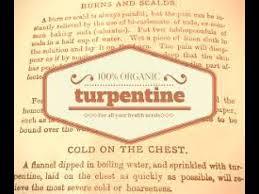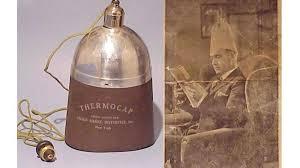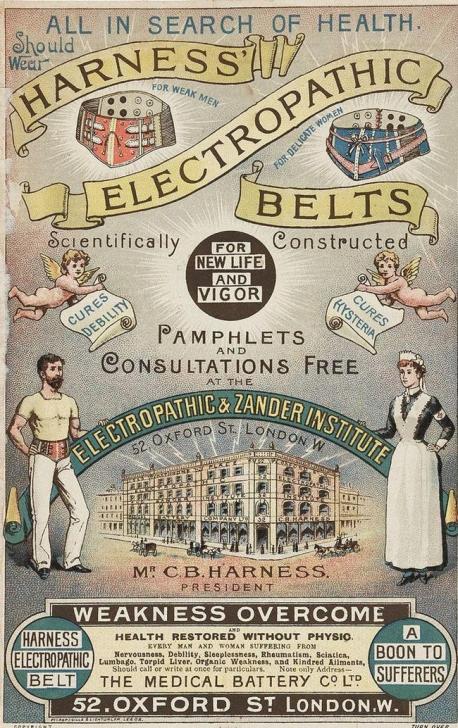Results: Take Two Leeches And Call Me In The Morning
Published on 07/23/2019
QUESTIONS
GO to COMMENTS
Comments
1.
1.
Home remedies for all types of ailments have been passed down from generation to generation -- some work (we all know that chicken soup is really good for fighting a cold) and some don't. A timeless potion for cold and flu relief, using chicken soup to help fight disease dates back as far as 60 AD, with reports of Roman surgeon Pedacius Dioscorides praising the dish as more than just delicious. Today, we know that an amino acid found in chicken soup called cysteine acts as a decongestant — which is why this works fighting a cold or flu. But some old time remedies border on useless or even dangerous. Have you ever heard of any of these questionable remedies for colds or flues?

According to Mrs. Beeton's Book of Household Management — published in 1861 — wrapping your chest in a flannel blanket dipped in boiling water and sprinkled with turpentine will relieve the hoarsest of coughs and toughest congestion.
7%
150 votes
Before modern medical science, the English thought health was a balance of what they called the "four humours": blood, phlegm, yellow bile and black bile. Each of these humours were associated with a sickness, and blood was considered to be the cause of all overheating. If your temperature was too high, they would bleed you dry with leeches...
21%
483 votes
Once one person in a household came down with the flu, others would soon be infected as well. To try and prevent that, some families would slice onions and place them around the house. it was thought that the onions could "absorb" the virus and prevent others from catching it.
17%
389 votes
"A small quantity of Pluto Water each morning upon arising will keep you regular and help ward off early winter colds and flu," wrote one ad from 1930. Unfortunately, many laxatives of the time were made of toxic ingredients, such as the cancer-causing phenolphthalein and poisonous mercury.
4%
84 votes
During the 1918 flu pandemic, a group of English villagers noticed that workers who were exposed to noxious gases saw lower rates of influenza. Because of the correlation, many parents took their children to the nearest industrial plant instead of to the doctor to inhale the supposedly "helpful" fumes.
3%
74 votes
During the Spanish flu epidemic of 1918, doctors attempted to use quinine (used for malaria) to stave off the fevers associated with the flu. Unfortunately, the reason quinine reduced malaria's fever was because it actually treated malaria by attacking the parasites that cause it. The treatment is useless against viruses like the flu
7%
149 votes
Enemas were thought to be another way 19th-century doctors could "flush out" the flu.
10%
234 votes
None of them
61%
1385 votes
2.
2.
Now many men embrace their baldness, but it used to be a trait men would try anything to reverse. Have you ever heard of any of these "cures" or "treatments" for baldness (no idea if any of these actually worked)?

The Ebers Papyrus, a medical text that dates back to 1550 B.C., offers a number of recommended cures for ancient Egyptians suffering from hair loss. Suggestions include a mixture of fats from a hippopotamus, crocodile, tomcat, snake and ibex; porcupine hair boiled in water and applied to the scalp for four days; and the leg of a female greyhound sautéed in oil with the hoof of a donkey
5%
118 votes
The ancient Greek physician Hippocrates, who was born around 460 B.C. and is often referred to as the father of Western medicine, personally grappled with male pattern baldness. He suggested a topical concoction of opium, horseradish, pigeon droppings, beetroot and spices.
6%
143 votes
Hippocrates also conceived of a radical treatment for hair loss after noticing that eunuchs never went thin on top. Though it is unlikely that men began opting for castration over a bald spot, in 1995 researchers at Duke University confirmed that the procedure could indeed prevent hair loss.
6%
125 votes
In 19th-century England, people stricken with thinning hair would rub "cold India tea" and hunks of lemon into their scalps.
3%
65 votes
The Thermocap device, unveiled by the Allied Merke Institute in the 1920s promised that 15 minutes a day under the bonnet-like gadget's heat and blue light, would supposedly stimulate dormant hair bulbs.
4%
88 votes
The Crosley Corporation, a radio and automobile manufacturer, ventured into the personal care market with its 1936 introduction of the Xervac, a machine that purportedly used suction to spur hair growth
3%
57 votes
None
83%
1879 votes
3.
3.
Before Viagra was discovered to help in the erectile dysfunction department, some pretty out-of-left-field ideas were tried, and "flopped". Have you ever heard about any of these?

French doctor Charles Edouard Brown-Sequard theorized that an injection of animal semen could cure impotence. In the late 1800s, He was 72 and he decided to insert semen from the testicles of dogs and guinea pigs into his own testicles. Following the procedure, many of his colleagues were impressed by his relative vitality, and further tests were carried out on other patients.
5%
122 votes
Urethral rods are exactly what you think they are - long metal rods inserted directly into the urethra. In the early 1800s, it was thought that this could produce an erection. An electric rod was sometimes used as well. One publication encouraged sending a mild current for 5-8 minutes.
7%
154 votes
As an impotence cure, the Kama Sutra encourages men to mix wasp stingers with oils and rub it on. After doing this for ten days, the man is supposed to be cured.
4%
95 votes
In the late 1800s, a medical electric belt promised to treat "nervous diseases." However, "nervous" was just code for "unable to get an erection." A user would strap the belt around his waist, and then place another attachment on the genitals, giving it a shock.
4%
86 votes
None
85%
1912 votes
4.
4.
These simple, old fashioned ways of treating ailments have been shown to work -- have you ever tried any of these?

Duct tape over warts -- This low-tech method is endorsed by the American Academy of Dermatology and has research to back it up. Although doctors aren't exactly sure why it works, placing duct tape over warts was 25 percent more effective than freezing them—and much cheaper
13%
304 votes
Apple to clean teeth -- The skin of the apple, which is extremely high in fiber, can scrub against your teeth, helping to remove plaque and stain. Although apples do contain acids and sugar, which can damage teeth, the benefits may outweigh the negatives. Swish your mouth with water afterwards to rinse them off.
13%
283 votes
Licorice plant for bad breath -- An effective agent to fight the bacteria that can cause tooth decay and periodontal disease, it is also used as a breath freshening ingredient in some natural toothpastes
10%
236 votes
Ice for headaches -- The National Headache Foundation advises applying cold packs on the forehead and temples. Frozen wraps placed in the front of the neck, over the carotid arteries, significantly reduced pain in migraine sufferers.
24%
548 votes
Aspirin for calluses and corns -- To create your own corn-softening compound, crush five or six uncoated aspirin tablets into a fine powder. Mix the powder thoroughly with one half teaspoon of lemon juice and one half teaspoon of water. Dab the paste onto the thickened skin, lay a piece of plastic wrap on top, and cover ?the plastic with a heated towel. Remove everything after ten minutes and gently scrub away the loosened skin with a pumice stone. (do not use this if you are allergic to aspirin)
7%
152 votes
None
59%
1325 votes
COMMENTS

